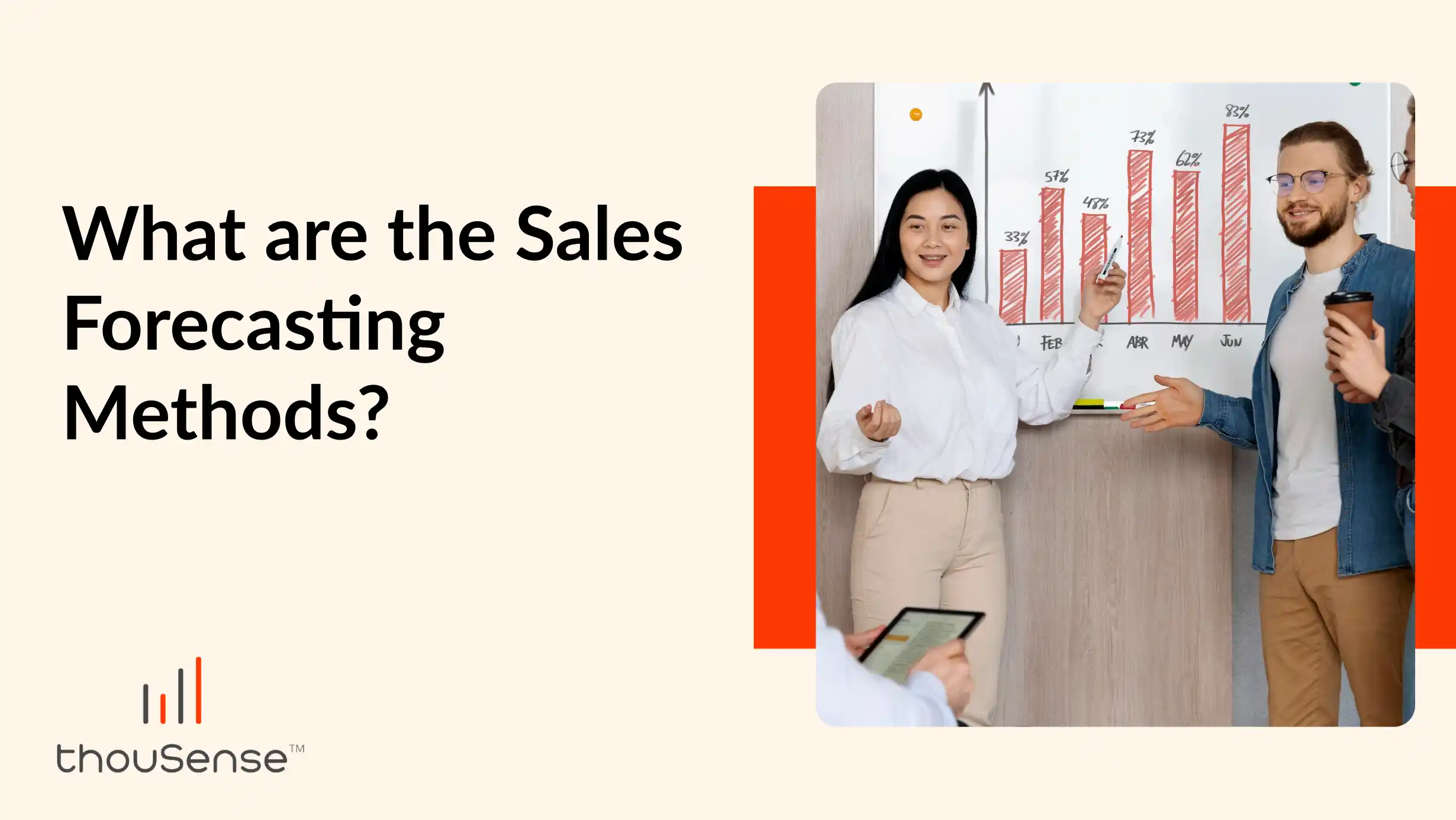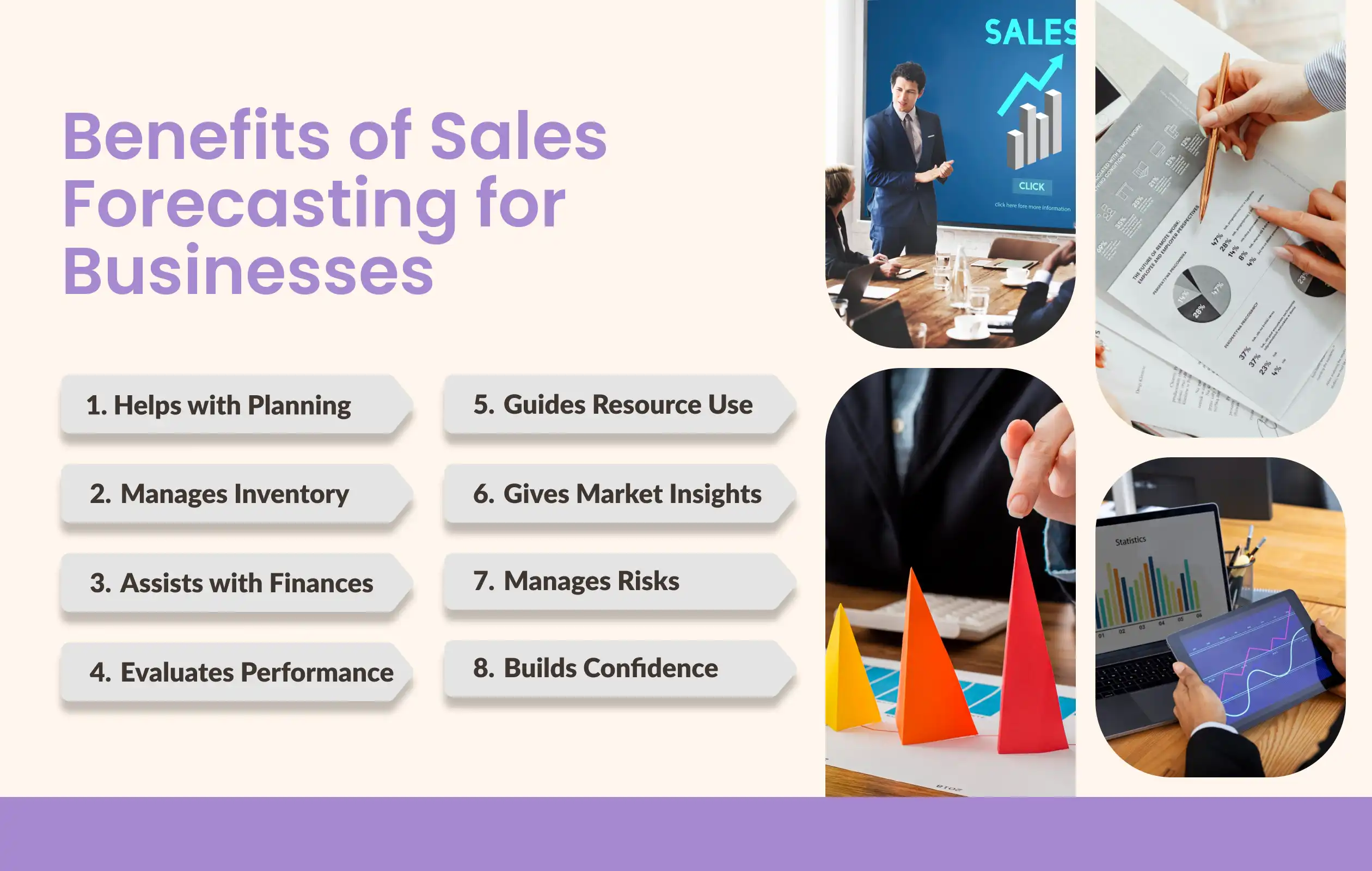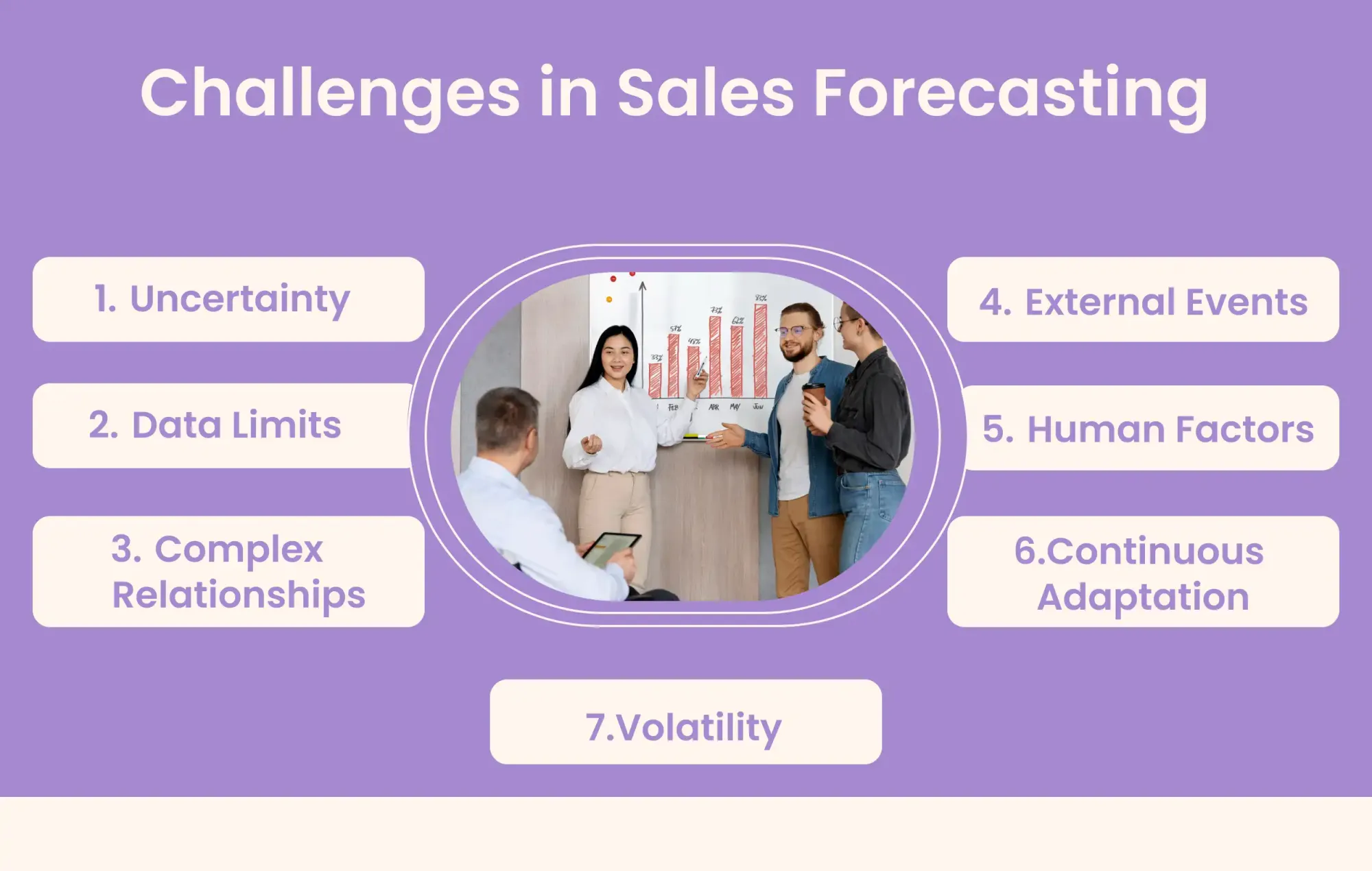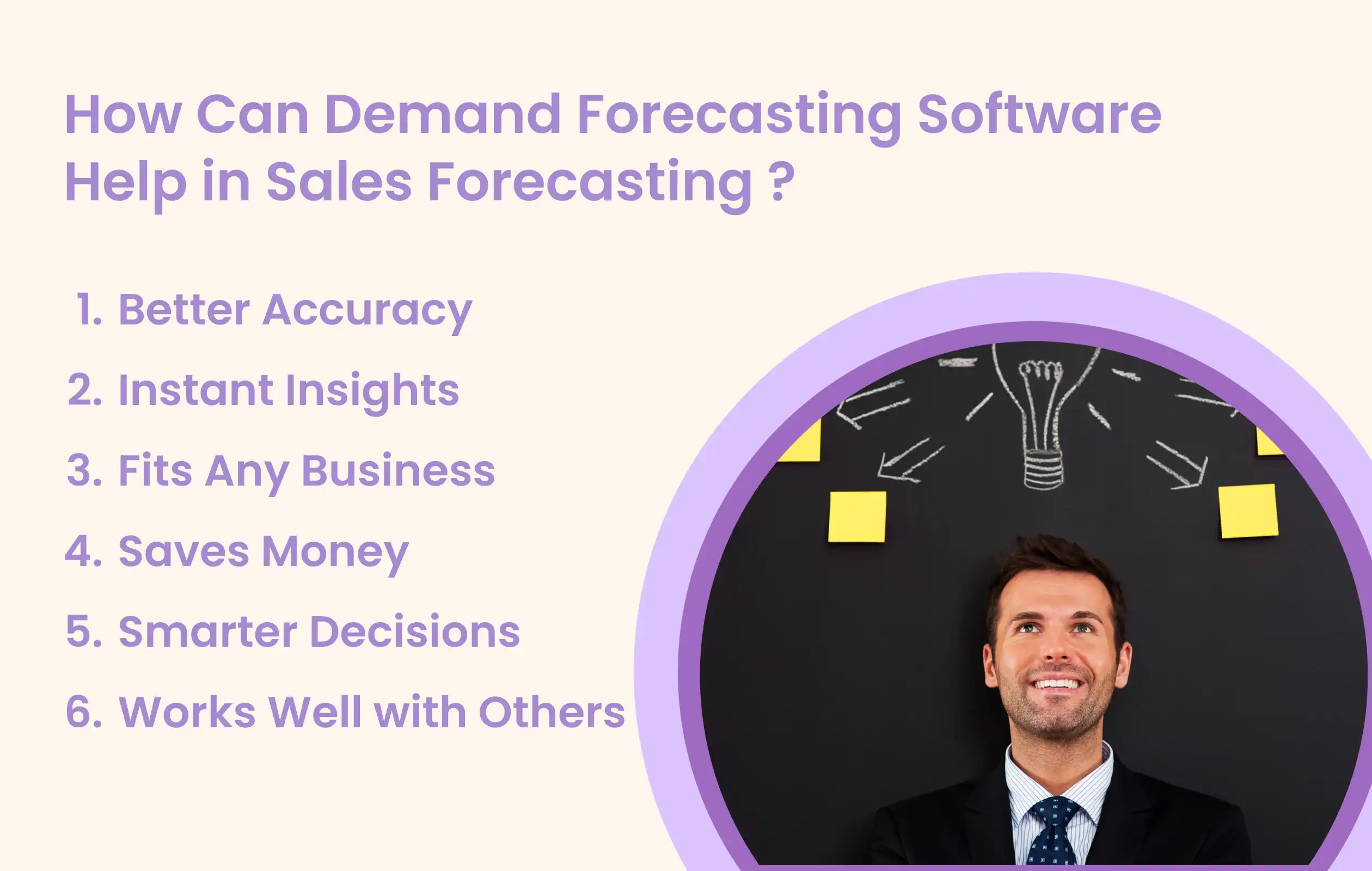What are the Sales Forecasting Methods? | thouSense

In the fast-paced world of business, accurately predicting sales is vital for planning, allocating resources, and ensuring overall success. When businesses can forecast sales effectively, they're able to make smart choices about how much to produce, manage inventory, and which marketing strategies to pursue. This blog post explores different methods for sales forecasting, discussing their advantages, difficulties, and ways to tackle challenges.
Benefits of Sales Forecasting for Businesses
Sales forecasting is very important for businesses to plan and make smart decisions. Let's discover some of the benefits it provides:
Benefits of Sales Forecasting:

● Helps with Planning: Sales forecasting helps businesses set goals and make plans by using resources wisely.
● Manages Inventory: By predicting sales accurately, businesses can keep the right amount of products in stock, saving money by not spending on excess stock.
● Assists with Finances: Sales forecasting helps with budgeting and managing money, so businesses can make smart choices about investing.
● Evaluates Performance: Sales forecasts show how well a business is doing, helping them see if they're on track and make changes if needed.
● Guides Resource Use: With sales forecasts, businesses can decide how to use things like people and money more effectively, getting the most out of them.
● Gives Market Insights: Sales forecasting helps businesses understand what customers want and how the market is changing, so they can adjust their plans.
● Manages Risks: By predicting sales trends, businesses can prepare for risks and avoid problems that could hurt their operations.
● Builds Confidence: Accurate sales forecasts make investors and employees trust the business more, showing that it's reliable and has potential for success.
Sales forecasting is a very useful tool for businesses to plan, manage money, and adapt to changes. It's key to making good decisions and reaching long-term goals.
Sales Forecasting Methods
In this section, we’ll explore effective strategies for predicting future sales.
Qualitative Sales Forecasting Methods
Qualitative sales forecasting methods help us predict future sales by using expert judgment, market research, and subjective assessments. All of which are explained briefly:
● Market Research: Market research means gathering data on what customers like and trends in the market. This helps businesses understand what their customers want and change their sales plans.
● Expert Opinion: Expert opinion is important in qualitative forecasting. By asking industry experts and salespeople, businesses can get useful ideas about future sales. This helps them understand the market better and make good decisions.
● Delphi Method: The Delphi Method is another way to forecast sales. It involves experts giving their opinions anonymously. They keep giving feedback until they agree on a prediction. This way, we get better forecasts without any individual's biased perspective.
Qualitative sales forecasting methods help us predict sales by using different opinions and real-world data. By listening to experts and doing research, businesses can make smart decisions and adapt to changes in the market.
Quantitative Sales Forecasting Methods
Quantitative sales forecasting methods are powerful tools that businesses use to predict future sales using mathematical algorithms and past data. Two widely used quantitative sales forecasting methods are Time Series Analysis and Regression Analysis. Both of these are explained below:
● Time Series Analysis: Time Series Analysis analyzes sales data from the past to ascertain if there are any repeating patterns, trends, or seasonal changes. For example, the data might show that certain products sell more during holidays or specific times of the year. By knowing these patterns, businesses can plan better for the future.
● Regression Analysis: Regression Analysis includes finding connections between sales and other factors, like how much a company spends on advertising or its economic position. For instance, it might signify that when a company spends more on ads, they usually sell more. By understanding these connections, businesses can predict how changes in these factors might affect sales in the future.
One big advantage of sales forecasting methods is that they analyse facts and figures, so they're not based on someone's opinion. This makes them more useful and reliable, especially when markets are competitive or change quickly.
Also, these methods are advantageous because once a business figure out how to properly utilize them, it can keep applying them over and over for different products or situations. This helps businesses make decisions faster and adapt to changes in the market more easily.
But, sometimes sales forecasting methods can't predict everything, especially due to a lack of data, like for new product launches. Quantitative sales forecasting methods might not consider factors such as consumer taste, branding, and loyalty.
So, in short, quantitative sales forecasting methods help businesses see into the future by using mathematical models and past data. They're like a roadmap that helps companies make smart decisions and stay ahead in a fast-changing world.
Challenges in Sales Forecasting
Sales forecasting is very important for businesses because it helps them plan by estimating sales for the future. However, it's not always this easy. Let's look at the primary challenges in sales forecasting:

● Uncertainty: Predicting sales is tricky due to factors like market changes, consumer preference, and volatile economic conditions can be difficult to predict.
● Data Limits: Good predictions need good data. But sometimes it's onerous to get the right data, especially for new products or in new markets.
● Complex Relationships: Sales are affected by lots of factors such as the time of year, competitor activities, and what customers prefer. Understanding all these factors can be difficult.
● Volatility: Markets can be unpredictable. Sudden changes, like customer demand or if a competitor does something unexpected, can result in inaccurate predictions.
● External Events: External situations such as natural disasters or political issues, can also affect sales forecasts.
● Human Factors: People making predictions aren't perfect. Our opinions and mistakes can foul up forecasts.
● Continuous Adaptation: Markets are always changing, so our predictions need to change and be dynamic too.
Sales forecasting has challenges like uncertainty, data limits, complex relationships, volatility, external events, human factors, technology limits, and the need to keep adapting. To get it right, we need to be careful with our data, aware of our biases, and ready to adjust our predictions when things change.
How Can Demand Forecasting Software Help in Sales Forecasting?
Sales forecasting often poses challenges for businesses, but thouSense's AI demand forecasting tool is here to help. Let's see how these tools can tackle common hurdles in predicting future sales.

● Better Accuracy: thouSense's AI tools use smart algorithms to study past sales and market trends, making predictions more reliable.
● Instant Insights: With AI, thouSense's tool gives quick updates on market changes and customer preferences, helping businesses adjust fast.
● Fits Any Business: Whether small or big, thouSense's tool can handle lots of data and adapt to any company's needs.
● Works Well with Others: thouSense's tool easily connects with other business systems like CRM or inventory management, making teamwork smoother.
● Saves Money: By keeping inventory in check and avoiding stockouts, thouSense's tool helps companies save cash. They also reduce the need for rush deliveries or extra production.
● Smarter Decisions: Thanks to accurate forecasts, decision-makers can plan pricing, promotions, and product launches better, leading to more sales and happier customers.
thouSense's AI demand forecasting tool offers many benefits for businesses, making sales predictions more accurate and helping them grow faster.
Conclusion
In sales forecasting, businesses often struggle to predict future demand accurately. However, technology has introduced innovative solutions like thouSense's AI demand forecasting tool to address these challenges. This tool uses smart algorithms and machine learning to improve accuracy, provide real-time insights, and save costs. By enabling businesses to make smarter decisions and achieve their sales goals more efficiently, demand forecasting software has become a valuable asset in today's competitive market.
FAQs
1. Why is sales forecasting important for businesses?
Sales forecasting helps businesses plan resources, manage inventory efficiently, and strategize effectively for better financial outcomes.
2. What are the advantages of using quantitative sales forecasting methods?
Quantitative methods offer reliability through mathematical models and past data analysis, aiding faster decision-making and adaptability in competitive markets.
3. What benefits does sales forecasting offer to businesses?
Sales forecasting assists in planning, inventory management, financial decision-making, performance evaluation, resource allocation, market insights, risk management, and building investor confidence.
4. What are the primary challenges in sales forecasting?
Challenges include uncertainty due to market changes, data limitations, complex relationships affecting sales, volatility, external events, human biases, technological limitations, and the necessity for continuous adaptation.
5. How can businesses overcome challenges in sales forecasting?
Businesses can overcome challenges by ensuring quality data collection, awareness of biases, and readiness to adjust predictions dynamically to evolving market conditions.